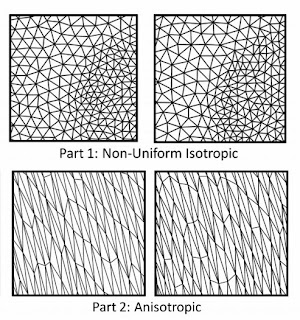UT Dallas computer scientists
have developed a technique to make 3D images that finds practical applications
of a theory created by a famous mathematician. This technique uses anisotropic
triangles – triangles with sides that vary in length depending on their
direction – to create 3D mesh computer graphics that more accurately
approximate the shapes of the original objects, and in a shorter amount of time
than current techniques. These types of images are used in movies, video games
and computer modeling of various phenomena, such as the flow of water or air
across the Earth, the deformation and wrinkles of clothes on the human body, or
in mechanical and other types of engineering designs. Researchers hope this
technique will also lead to greater accuracy in models of human organs to more
effectively treat human diseases, such as cancer. The technique finds a
practical application of the Nash embedding theorem, which was named after
mathematician John Forbes Nash Jr. The computer graphics field represents
shapes in the virtual world through triangle mesh.
Traditionally, it is believed
that isotropic triangles – where each side of the triangle has the same length
regardless of direction – are the best representation of shapes. However, the
aggregate of these uniform triangles can create edges or bumps that are not on
the original objects. Because triangle sides can differ in anisotrophic images,
creating images with this technique would allow the user flexibility to more
accurately represent object edges or folds. Researchers found that replacing
isotropic triangles with anisotropic triangles in the particle-based method of
creating images resulted in smoother representations of objects. Depending on
the curvature of the objects, the technique can generate the image up to 125
times faster than common approaches. Objects using anisotropic triangles are of
a more accurate quality, and most noticeable to the human eye when it comes to
wrinkles and movement of clothes on human representatives. The next step of
this research is moving from representing the surface of 3-D objects to
representing 3-D volume.
More information:






